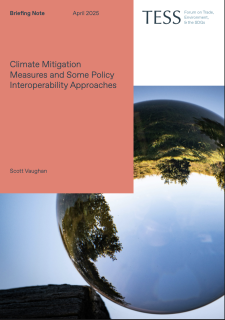
As climate mitigation policies and standards multiply around the world, ensuring they work together has been a key priority since the start of global climate efforts.
This briefing note explores how climate policy interoperability helps bridge differences between standards, technical rules and policies, making systems simpler and more efficient.
It focuses on two main ways interoperability is promoted: by recognizing the equivalency of different policies and by encouraging countries to align with international standards. It shows how these approaches can reduce unnecessary duplication, build trust and support smoother international trade, all while boosting mutual learning in climate action.
